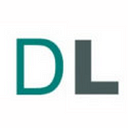Optimism About Inflation May Be Premature
Markets are pricing a rapid decline in inflation and the end of central bank policy normalization. However, there are two challenges ahead that we must consider.
The most important is that inflation is cumulative, and the year-on-year change between January and July was supported by the base effect. When the inflation rate used for the year-on-year change is high, even a persistent increase in prices looks like a “decline” in inflation. If I gain ten pounds one year and four the next, my inflation rate will fall, but I am not slimming. And prices continue to bite, hurting the economy and consumers.
The end of this “base effect tailwind” is particularly important. According to Bank of America Global Investments, unless month-on-month inflation in the U.S. stays below 0.2%, inflation will rise in 2024. If the CPI rises 0.3% month-on-month, annual inflation will rise to 4.6%. Furthermore, if month-on-month inflation is 0.5%, annual inflation will soar to 6.1%. Even if CPI is 0% month-on-month, annual inflation would be 2.5% in 2024, significantly above the Fed’s 2% target.
The second challenge is that commodity disinflation, alongside the base effect, has been a major driver of the reduction in the annual inflation rate. Rate hikes and monetary normalization triggered a decline in almost all global commodities in international markets, sending oil, natural gas, food prices, and agricultural goods down to pre-Ukraine invasion levels. It proved that inflation is a monetary phenomenon. However, the Fed-induced commodity decline reached a bottom in May, and the Bloomberg Commodity Index has bounced from the two-year low and is almost flat on the year. Rate hikes and monetary contraction have slowed, and commodity prices bounced as the fundamentals of supply and demand remained unchanged.
Real wages remain in negative territory, and this means a weakening of consumers’ purchasing power. The latest Employment Cost Index (ECI) shows a severe slowdown, and ECI private wages and salaries in the second quarter pushed the annual growth rate down from 5.1% to a two-year low of 4.6%, according to the Bureau of Labor Statistics (BLS). Average hourly earnings in real terms have fallen from $30 in 2021 to less than $29, according to the BLS.
Why should we remain worried? Because the market is excessively optimistic about the end of the inflation problem and investors keep buying extremely cyclical, high-beta stocks,
Real Personal Spending in June continued to show a weak trend (0.4%), and the Personal Consumer Expenditure (PCE) Deflator is still rising, 0.2% in June and 3.0% in the year, with its core component increasing 0.2% in the month and 4.1% in the year.
The reality is that monetary normalization remains far from complete. The Fed’s balance sheet soared from 17% to 36% of GDP and is now at 34.5%. It rose in July from the May low of 32.4%.
Many investors believe we have seen the worst of the inflation burst and hope that the economy will remain on a soft landing while central banks start easing, which would be very bullish. However, persistent inflation is hurting the economy, and the worst is yet to come now that savings have been mostly consumed and credit conditions are much tighter. If the base effect and monetary easing drive inflationary pressures higher, betting on central banks to cut rates and purchase government bonds may be very risky.
Original Source: https://www.dlacalle.com/en/optimism-about-inflation-may-be-premature/
